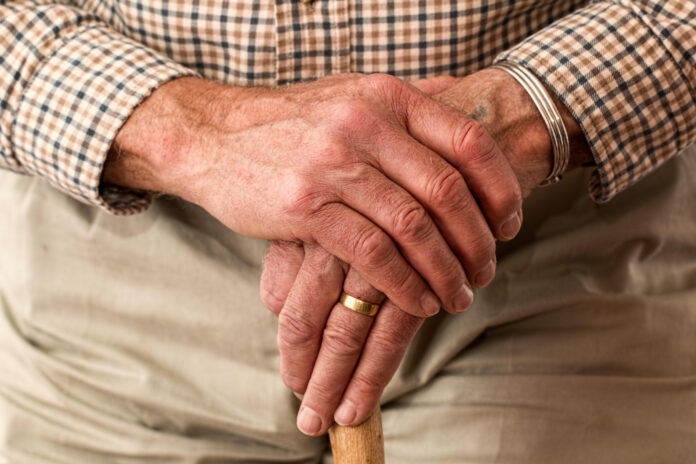Ageing comes with several health challenges, which eventually affect mobility and cognition. With lower mobility and memory, seniors become highly vulnerable to accidents, leading to injuries, compromising their health and safety.
So, as a caregiver to a senior family member, you should put adequate measures to protect your loved ones from common injuries and accidents. Look for measures that keep them healthy and safe.
Here are the most common injuries among seniors and the relevant preventive measures.
Hip Dislocation
Bones become weaker over the years, making seniors highly susceptible to hip injuries. The primary cause of weaker bones among older adults includes regular intake of multiple medications.
In addition, older people have decreased vision, increasing their vulnerability to falls that can break the upper quarter of the femur bone. The most effective secret to minimizing hip location is living a healthy lifestyle that strengthens the bones and makes vision sharper, even in old age.
With a healthy lifestyle, your loved one enjoys excellent health for a long time, minimizing their dependency on medications. That way, their bones stay stronger for longer. If the elderly must take medication, you must monitor them and clear the surrounding of any hazards while maximizing their calcium and vitamin D intake.
Burns
Burns are common accidents among kids and the elderly, and they result in severe consequences – some irreversible. With compromised mobility, cognitive and energy levels, the kitchen is a NO go zone for seniors unless under supervision.
Elders struggling to move around can easily knock a boiling pot off the stove – which is dangerous to themselves and anyone else. Besides, with compromised memory and cognition, it isn’t difficult for an older adult to touch a hot pan or forget to turn off the stove.
So, despite their demand for independence, you should always check on your elderly loved ones anytime they are in the kitchen cooking or picking something.
Ankle Sprains
Ankle sprains are a common occurrence today but most prevalent among older adults. These sprains may occur during walks around the home or when exercising. Seniors are highly vulnerable to rolling and twisting their feet, causing displacement of ankle joints. For this reason, seniors should be cautious about high-impact physical exercise.
Instead, you can suggest and engage your elderly loved ones in low-impact exercises to keep them physically active without putting them at the risk of ankle sprains and other related injuries. These exercises put minimal pressure on the body and increase the quality of life among seniors. Water aerobics is one of the best exercises to recommend for your elderly loved one.
Groin Injuries
Groin injury occurs when seniors overstretch or rip their adductor muscles, causing pain in the groin area. Groin injuries are painful and result in walking difficulties that can be challenging among the elderly, who already have compromised mobility.
To minimize the chances of groin injuries, seniors should focus their workouts on individual physical capabilities and slowly increase the intensity and routine over time. If your loved one experiences stiffness and pain during their workouts, they should stop immediately and consult a primary health provider.
Head Traumas
Falls and auto accidents can lead to traumatic brain injury among older victims. With less mobility, memory and energy levels, older adults are likely to slide and fall or get involved in car accidents. Parkinson’s disease and dementia are the significant risks linked to such, making seniors the most vulnerable victims to head trauma, among other effects.
To protect your loved ones, always ensure that they wear a seatbelt in the car, minimize alcohol consumption and use walking devices suitably. Besides, you should always have Hydrofera blue dressing to dress trauma inflicted wounds.
Neck and Back Injuries
Lower back pain is a common health issue today but more prevalent among older adults. The pain mainly results from arthritic facet joints, thickened ligaments and disc degeneration. To minimize pain in the lower back among seniors, you should ensure that they take nutritionally balanced meals while keeping their weight in check – obesity and overweight can cause lower back pain.
Exercising is also an effective secret to maintaining a good posture, thereby minimizing the odds of lower back injuries.
Back and neck injuries result from strains and tears in the ligaments. The injuries result in chronic pain, which causes discomfort, difficulties in moving around and handling daily tasks. The preventive measures include doing light but daily stretches to loosen up the back, shoulder and neck muscles.
However, seniors should avoid high-intensity workouts involving heavy lifting to kill the odds of hurting the relevant muscles – neck, back and shoulders.
To Conclude
Ageing comes with various health issues that make older adults vulnerable to accidents and injuries. However, you can keep your loved ones safe and healthy if you follow suitable preventive measures, whether at home or when travelling.
Having a healthy senior means peace of mind for you and high-quality life for them.
























